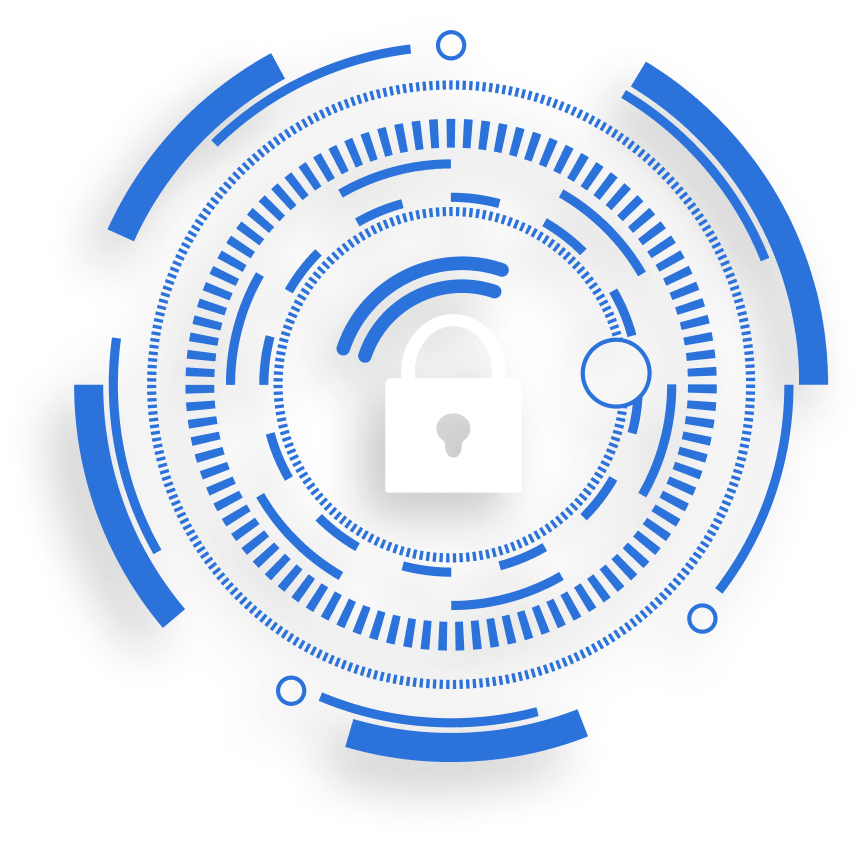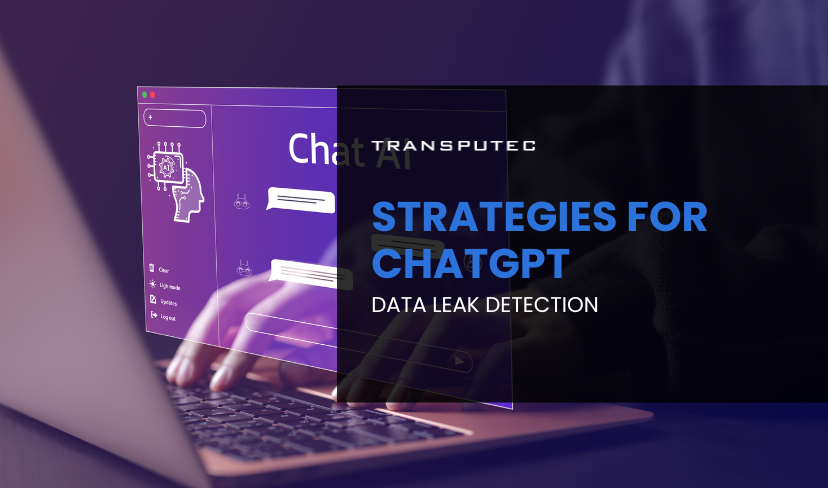Written by SONNY SEHGAL | CEO
Picture this: A team member innocently shares project details with ChatGPT to streamline their work, unaware that this simple interaction could expose proprietary data. A few missteps, and suddenly, sensitive information—client names, financial records, internal strategies—could be vulnerable. For businesses relying on AI tools, the convenience comes with a hidden risk: data leaks that could lead to financial losses and reputational damage.
In today’s digital-first world, the integration of artificial intelligence (AI) tools like ChatGPT has reshaped the way organisations interact with data and streamline operations. However, this integration brings forth critical security risks, notably data leaks. With AI applications managing sensitive and proprietary information, the need for robust data leak detection strategies is more important than ever. This guide dives into the key Data Leak Detection Strategies for ChatGPT and similar AI tools, offering insight into protecting valuable data and ensuring safe, compliant AI usage.
Understanding the Risk of Data Leaks in AI Tools Like ChatGPT
Data leakage can occur when sensitive information is exposed, either intentionally or inadvertently, to unauthorised parties. In the context of AI tools like ChatGPT, data leaks pose unique risks due to the way AI models process and store data. Given that large language models like ChatGPT are trained on extensive datasets, there is a heightened risk that sensitive or proprietary information could be retained or inadvertently shared.
According to the Ponemon Institute’s 2022 Data Breach report, the average cost of a data breach is $4.35 million, underscoring the financial risks involved.
Key Concerns of Data Leak in AI Applications
AI applications like ChatGPT handle vast amounts of data, often including sensitive business, personal, and financial information. When using these powerful tools, organisations must be vigilant about potential data leaks, which can arise due to various factors. Here are some of the main concerns associated with data leaks in AI applications:
1. Retention and Exposure of Sensitive Data
AI models often retain certain patterns from the data they process, which means they may inadvertently store or reference sensitive information. This becomes particularly concerning in scenarios where an AI model might respond with information derived from past interactions, potentially exposing private data to unintended parties.
2. Access Control and User Permissions
If access control is not properly managed, unauthorised users within or outside the organisation might gain access to sensitive data handled by AI tools. Without robust permission settings, data becomes vulnerable to misuse, intentional leaks, or accidental exposure.
3. Data Privacy Compliance Challenges
Stringent data privacy regulations like GDPR, CCPA, and HIPAA require strict data handling, storage, and sharing procedures. AI applications often process information in ways that can blur the lines of compliance, making it difficult for organisations to meet regulatory standards and avoid legal repercussions.
4. Inadequate Data Masking and Anonymisation
Without proper data masking or anonymisation practices, AI tools can unintentionally expose identifying information, such as personal identifiers, financial data, or proprietary business insights. This is especially concerning for industries like healthcare, finance, and legal, where sensitive information is at higher risk.
5. Third-party and Vendor Risks
When businesses rely on third-party AI vendors, they are exposed to the security practices of those vendors. Data leaks can arise if these external providers lack rigorous security measures or fail to adequately protect information. This third-party vulnerability adds another layer of risk that must be managed carefully.
6. Insider Threats and Human Error
Data leaks can result from both intentional actions by malicious insiders and unintentional mistakes by well-meaning employees. Improper handling, accidental data sharing, or lack of awareness about security protocols can all lead to leaks, especially in high-stakes environments where sensitive data flows through AI applications daily.
7. Inadequate Monitoring and Anomaly Detection
Without robust monitoring and anomaly detection systems, unusual activity that may indicate a data leak can go unnoticed. When AI systems process high volumes of data continuously, detecting irregular access patterns, unusual data requests, or other suspicious behaviours becomes essential to prevent and contain leaks early.
Key Data Leak Detection Strategies for ChatGPT
1. Implementing End-to-End Encryption for Data Transmission
One of the most effective data leak prevention techniques is end-to-end encryption. This ensures that data remains secure from the moment it is input into ChatGPT to the moment it is processed and stored. End-to-end encryption encodes data in a way that only authorised parties can access it. For AI tools like ChatGPT, this encryption can prevent unauthorised access during transmission, safeguarding sensitive information from prying eyes.
By encrypting data through every stage of its journey, businesses can greatly reduce the likelihood of leaks and ensure that even if a breach occurs, the data remains unreadable and useless to unauthorised users.
2. Leveraging Anomaly Detection Systems for AI Interactions
Deploying anomaly detection systems tailored to monitor interactions with ChatGPT and other AI tools can greatly enhance leak detection capabilities. Anomaly detection algorithms can be trained to recognise patterns and flag unusual behaviour in AI-driven systems, such as:
- Abnormal Data Access Patterns: Detects if a user is accessing unusually high volumes of data.
- Sensitive Information Access: Flags attempt to access confidential data outside regular business hours or without permission.
- Suspicious Query Patterns: Monitors for unusual inputs or outputs from ChatGPT that may indicate unauthorised data handling.
For organisations using AI tools, anomaly detection can provide early warnings of potential data leaks, allowing for timely intervention and damage control.
3. Regular Audits and Logging of AI Tool Activities
Performing regular audits and maintaining logs of all activities within AI tools like ChatGPT helps track and monitor how data is accessed and used over time. Logs can capture:
- User Access History: Detailed records of who accessed what information and when.
- Data Modification Records: Information on changes made to data, which can be indicative of a potential leak.
- Interaction Patterns: Logs that analyse patterns in interactions with ChatGPT, identifying if sensitive information is inadvertently being shared.
Regular audits paired with comprehensive logging provide a clear record of any irregularities, making it easier to identify leaks and hold accountable those responsible.
4. Use Data Masking Techniques to Protect Sensitive Information
Data masking is a powerful method in Data Leak Detection Strategies for ChatGPT, particularly for businesses handling highly sensitive information. Masking allows AI tools to process data without exposing its sensitive components. This is especially effective for:
- PII (Personally Identifiable Information): Such as names, Social Security numbers, and credit card details.
- Financial Data: Banking information or proprietary financial data can be masked, reducing its visibility.
Masking ensures that ChatGPT can perform its functions without directly exposing sensitive information, significantly mitigating the risk of leaks.
Protect your Business 24/7 with Transputec!
Our Managed SOC Cost Calculator estimates potential expenses for security tools and other costs based on your requirements.
5. Role-Based Access Controls and Multi-Factor Authentication
Role-based access controls (RBAC) and multi-factor authentication (MFA) provide layered security, reducing unauthorised access to sensitive data. By implementing RBAC, organisations can control who has access to various functionalities and data subsets in ChatGPT, ensuring that only those with appropriate permissions can view or manipulate sensitive data.
Multi-factor authentication adds a layer of security by requiring multiple verification methods before access is granted. This is particularly effective in securing AI applications against unauthorised access and data leaks.
6. Establishing Clear Data Handling Policies and Training
Clear data handling policies are essential in safeguarding data when using AI tools. Educating employees on data security practices and the specific risks associated with ChatGPT ensures that they handle data with caution and understand the protocols for preventing leaks. Essential policy components include:
- Data Sharing Restrictions: Guidelines on what information can be shared and with whom.
- Incident Response Procedures: Steps to take if a data leak is suspected or confirmed.
- Awareness Training: Regular training sessions to inform users of the unique data risks associated with ChatGPT and other AI tools.
Policies combined with ongoing training foster a culture of vigilance, reducing the likelihood of unintentional data leaks.
Conclusion
Integrating AI tools like ChatGPT offers significant benefits, yet also introduces unique risks for data security. By employing these Data Leak Detection Strategies for ChatGPT—from encryption and anomaly detection to role-based access controls and data masking—organisations can proactively mitigate data leak risks, ensuring a safe and secure AI environment.
As AI usage grows, so too does the importance of staying vigilant with advanced leak detection strategies. If your business is looking to implement a robust data protection strategy for AI tools, contact Transputec today to connect with our experts and get started. Secure your business and protect your data with industry-leading support.

Secure Your Business!
Ready to explore how we can enhance your security posture? Contact us today to speak with one of our experts.
FAQs
Why is data leak detection crucial for AI tools like ChatGPT?
Data leak detection is essential because AI tools process sensitive information that, if leaked, can lead to data breaches, legal implications, and financial losses. Detecting leaks early minimises damage and prevents unauthorised access to confidential data.
What are some effective data leak detection strategies for ChatGPT?
Effective strategies include end-to-end encryption, anomaly detection, regular auditing, data masking, and role-based access controls. These techniques protect sensitive information and monitor for any unauthorised or abnormal access.
How does data masking help in preventing data leaks in ChatGPT?
Data masking obscures sensitive information, making it inaccessible to unauthorised users while still allowing ChatGPT to process the data. It’s a preventative measure that reduces the risk of exposing sensitive data through the AI.
Can regular audits help in data leak detection for AI applications?
Yes, audits track access and modifications to sensitive data, identifying irregularities that could indicate leaks. Logging user interactions and monitoring for abnormal patterns are crucial for identifying potential breaches.
How do role-based access controls enhance data security in AI tools?
Role-based access controls limit data access based on user roles, ensuring that only authorised individuals have access to sensitive information, and reducing the likelihood of unauthorised data leaks.







